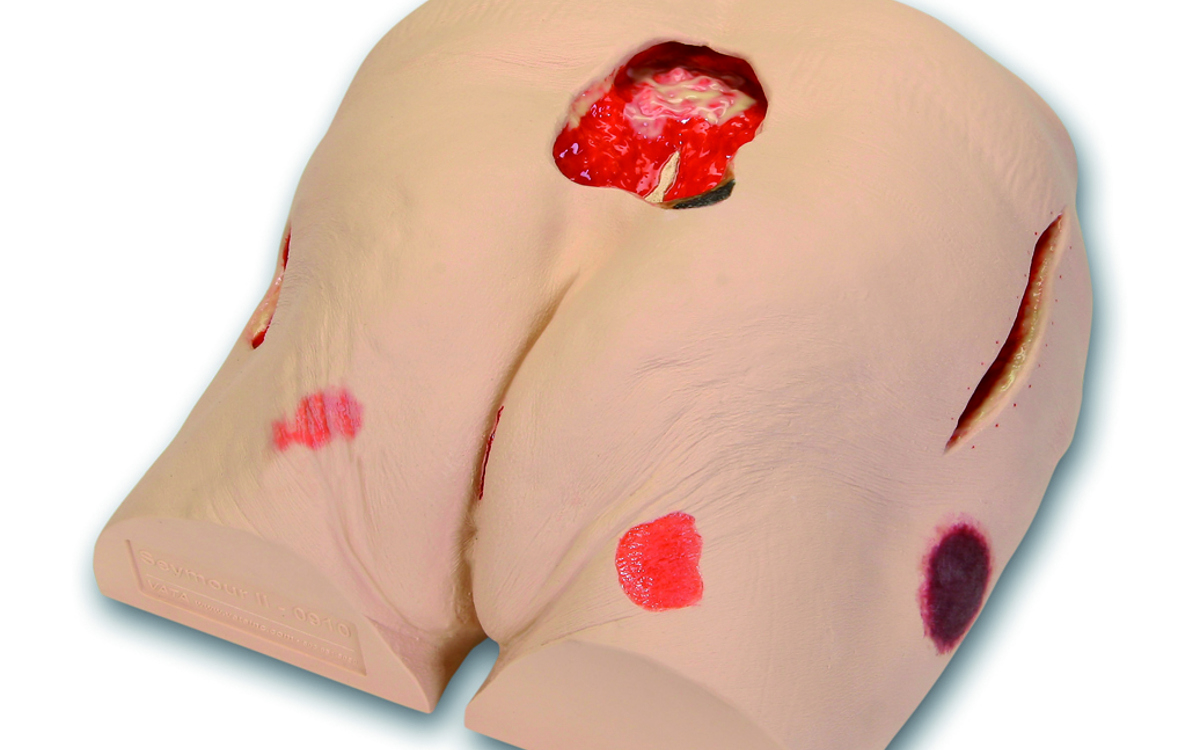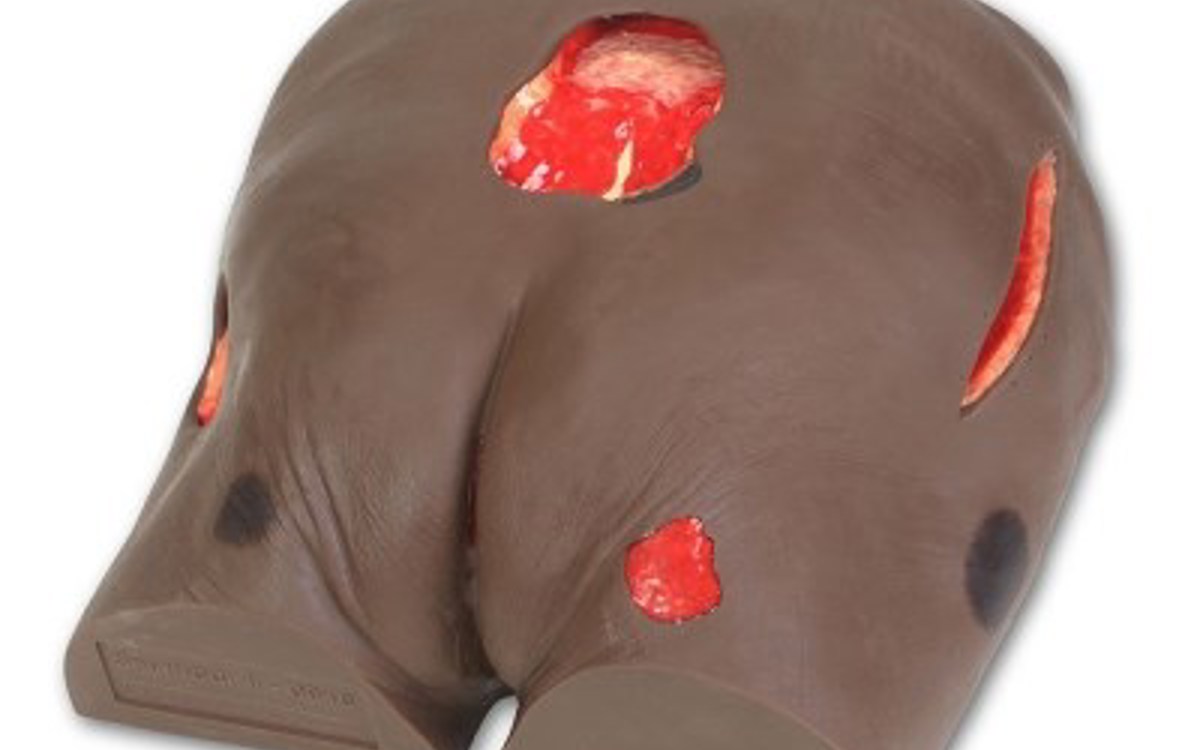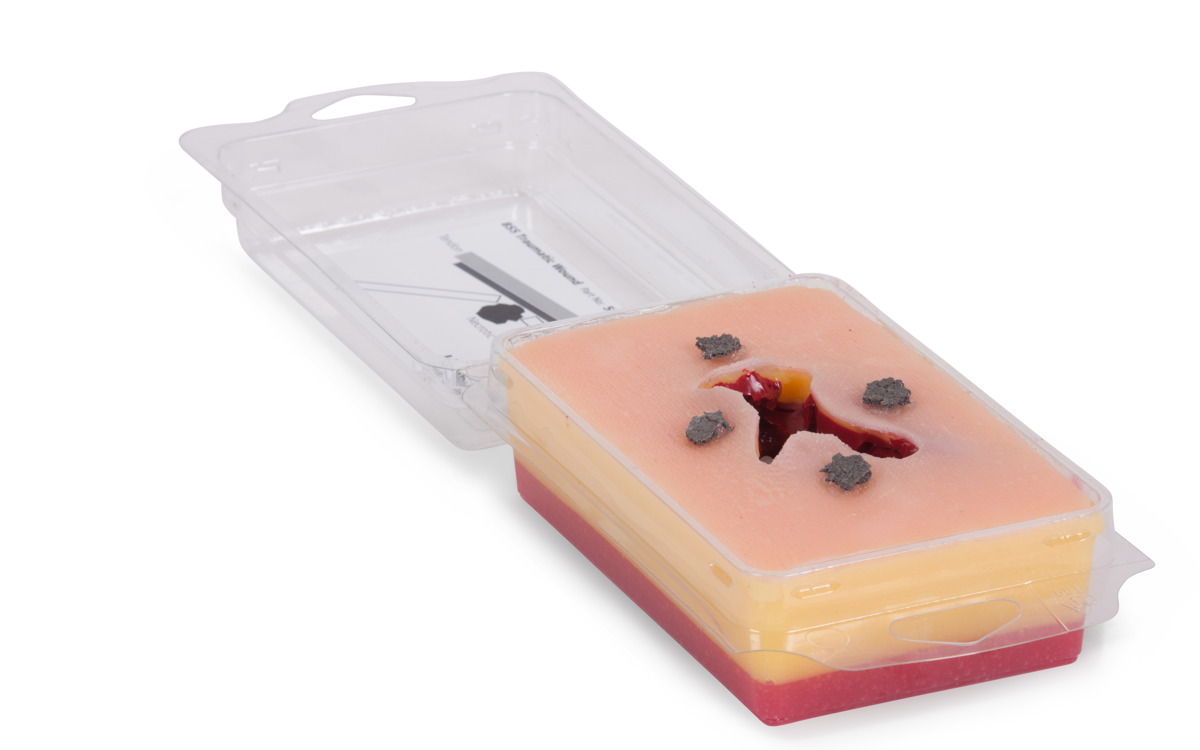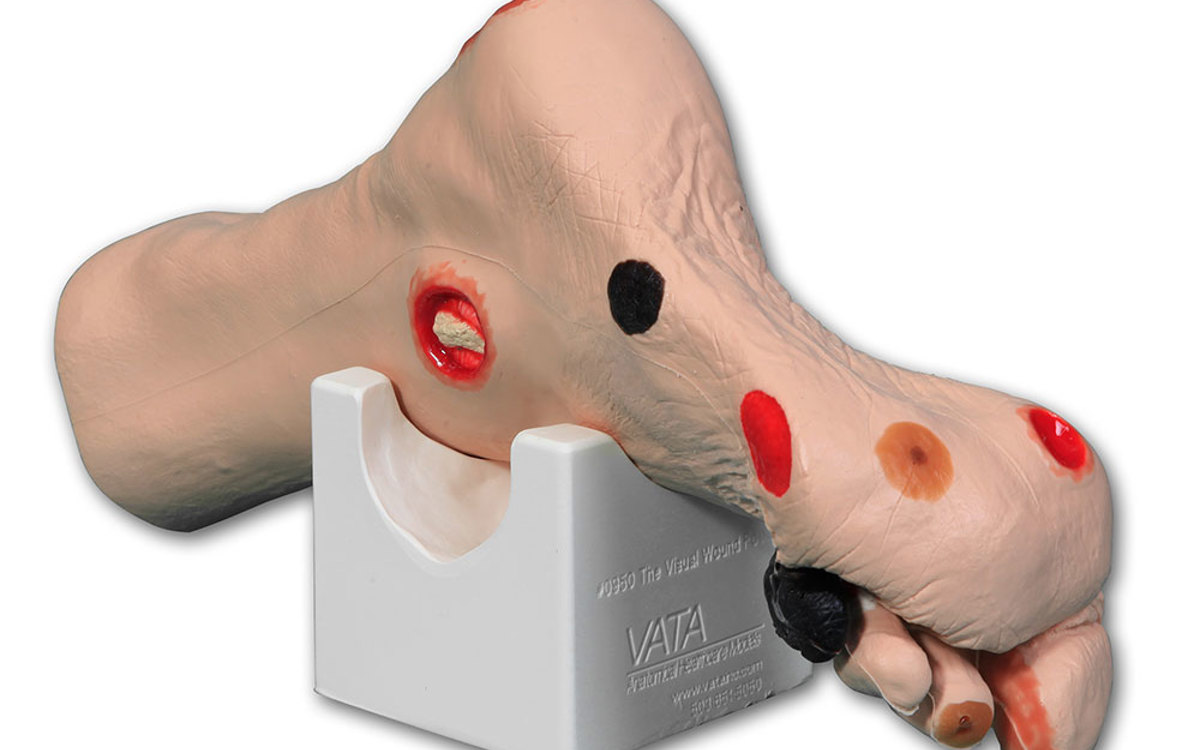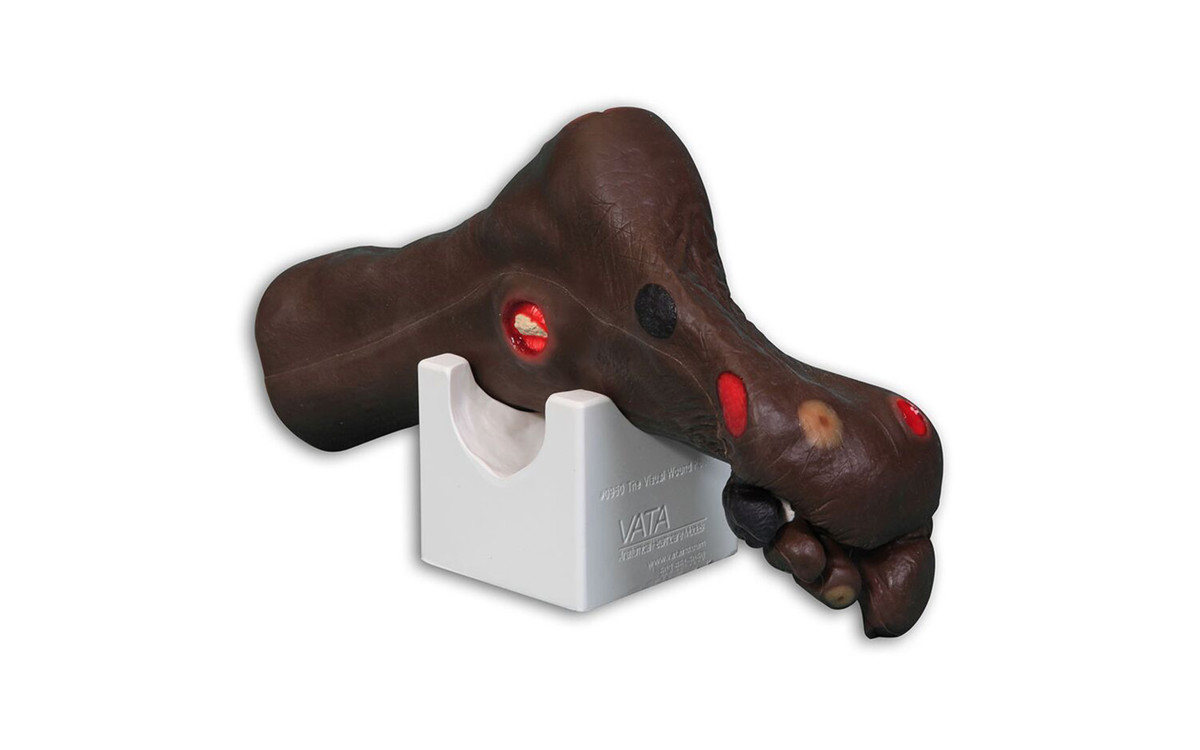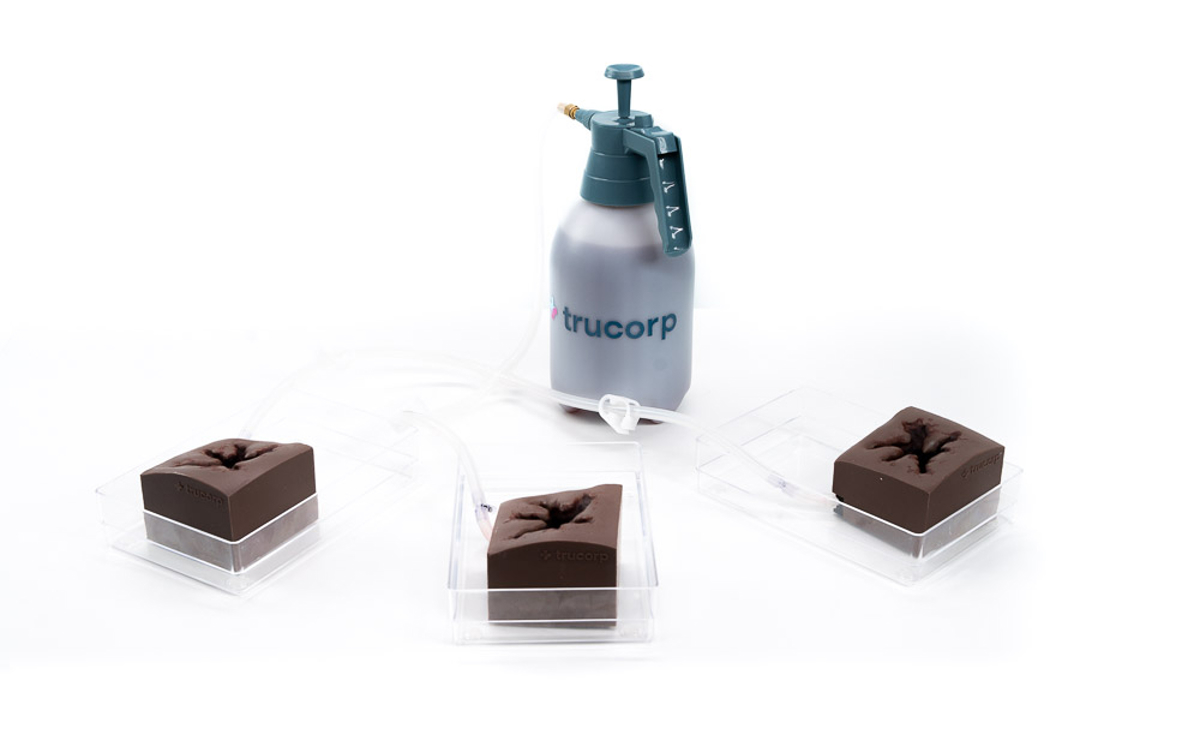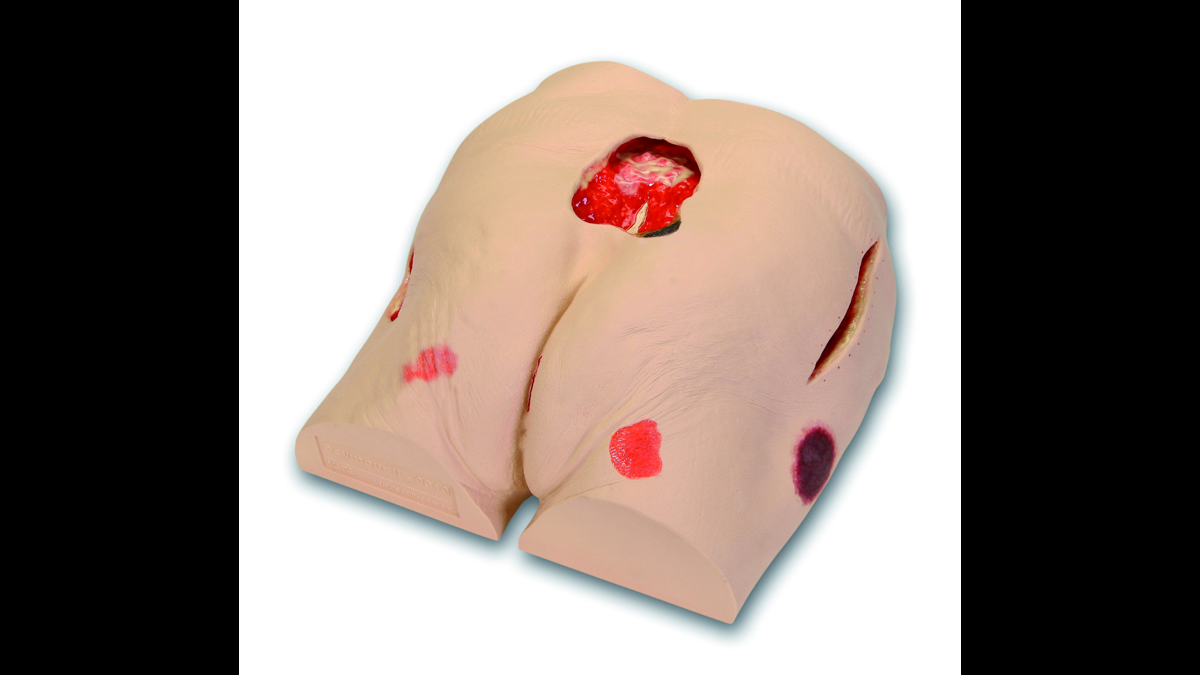
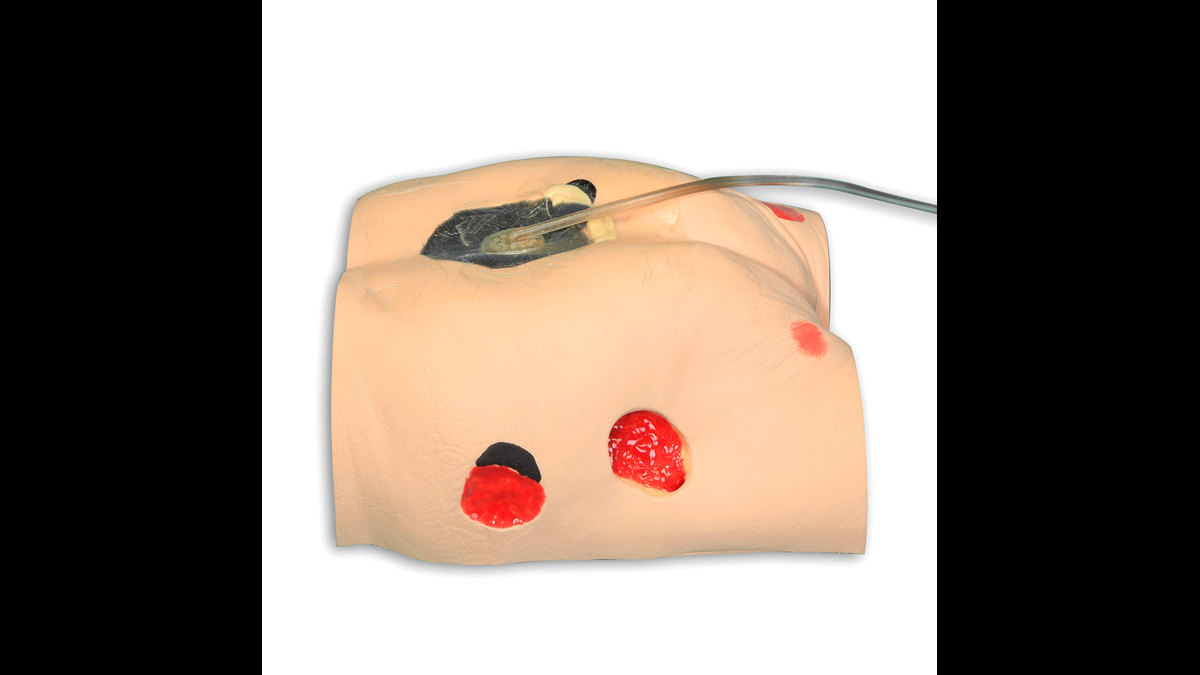
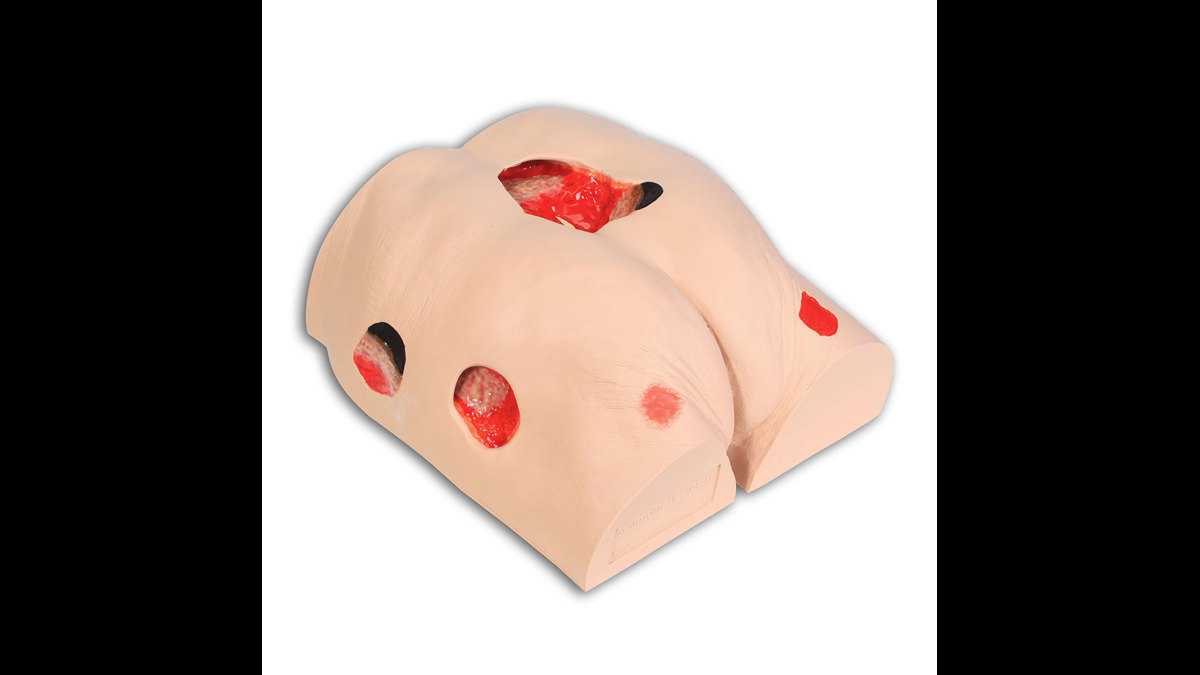
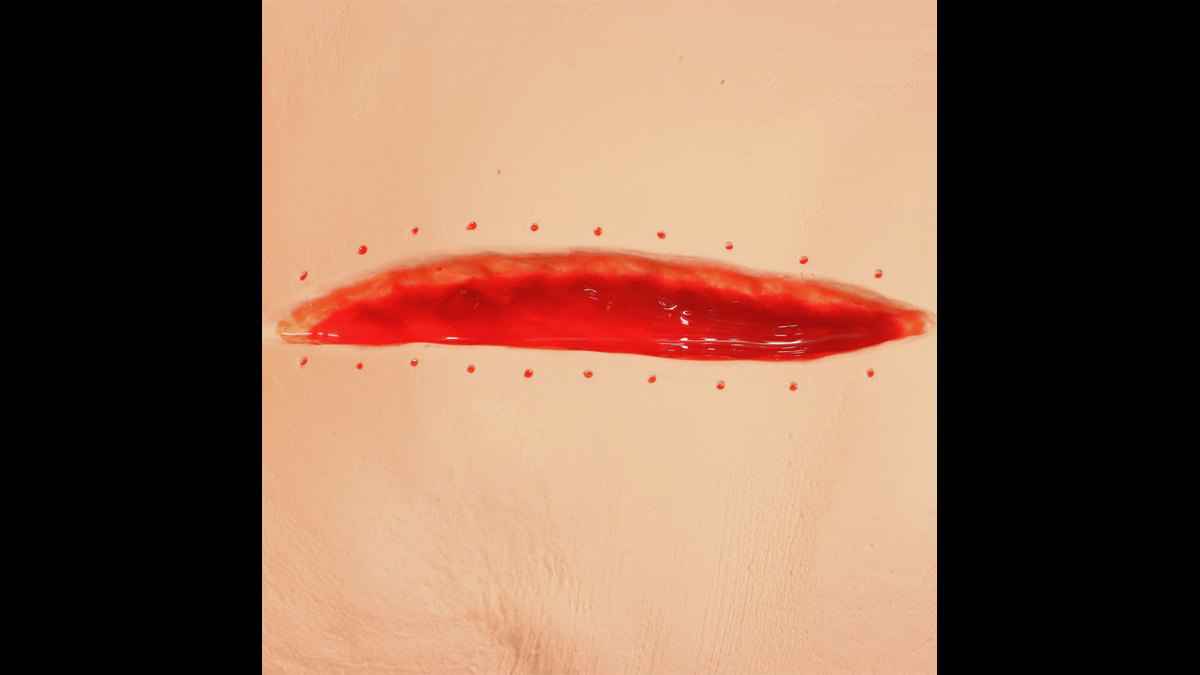
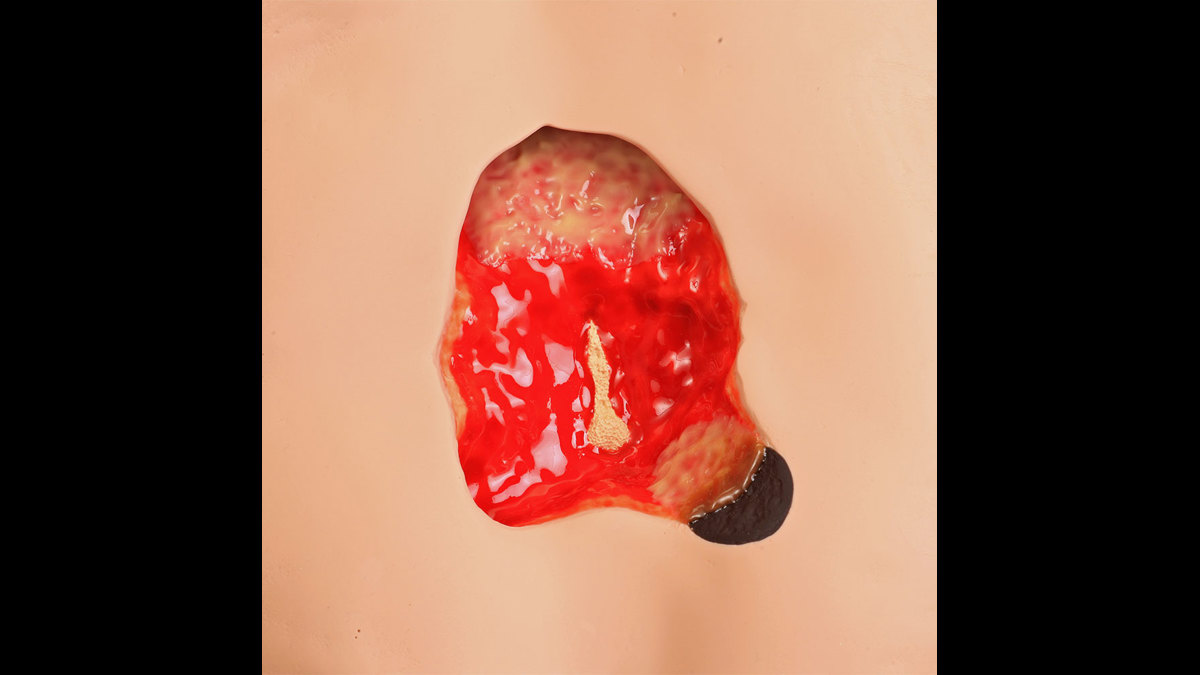
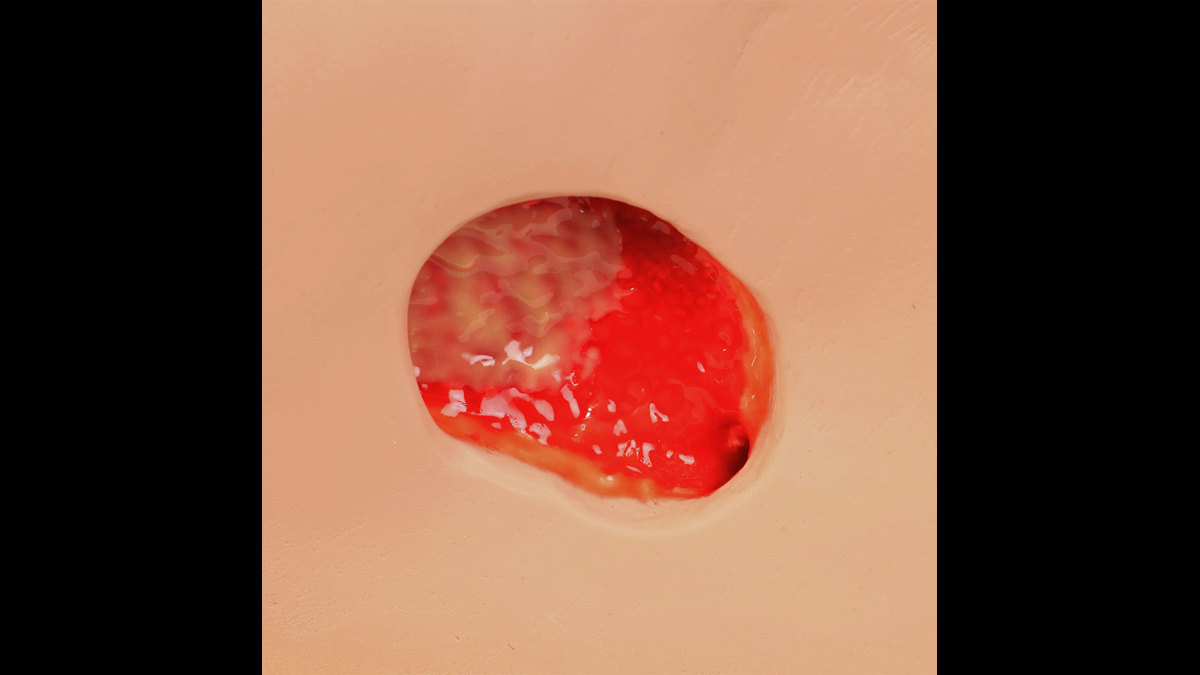
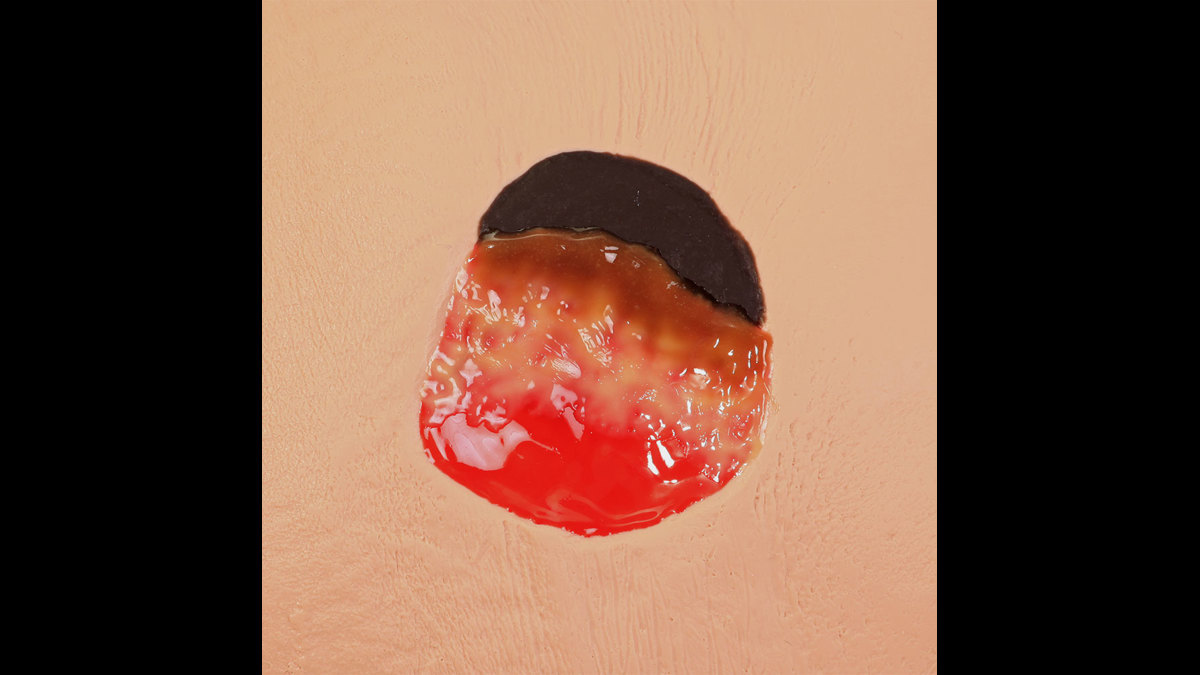
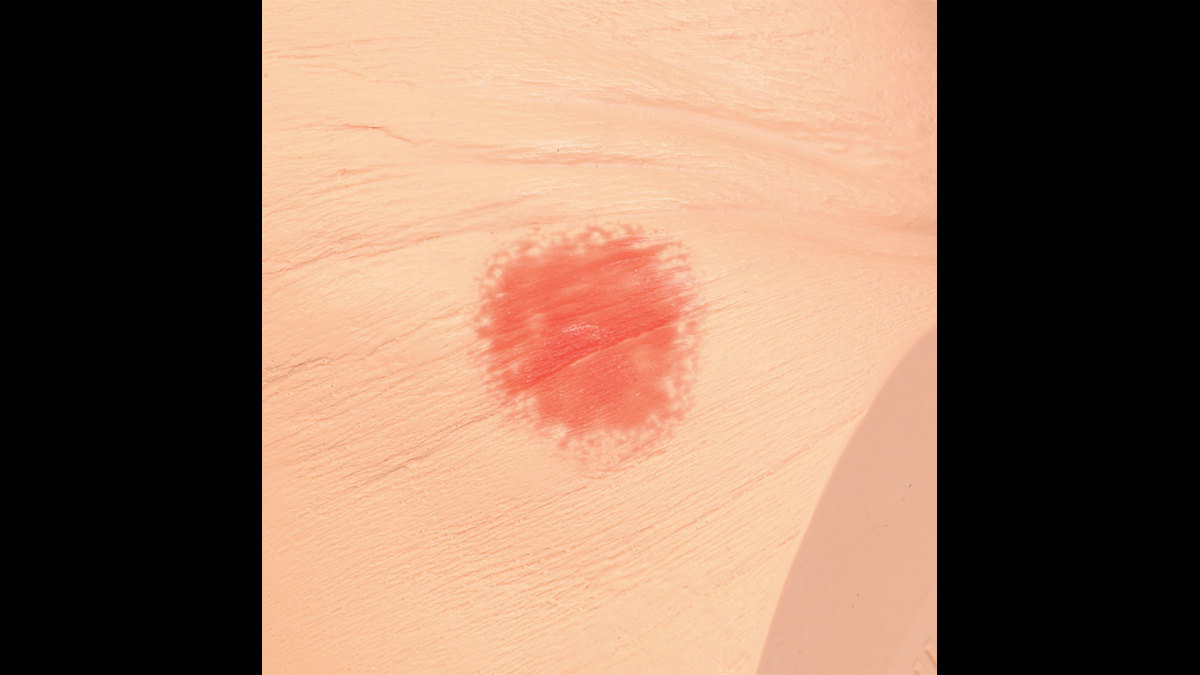
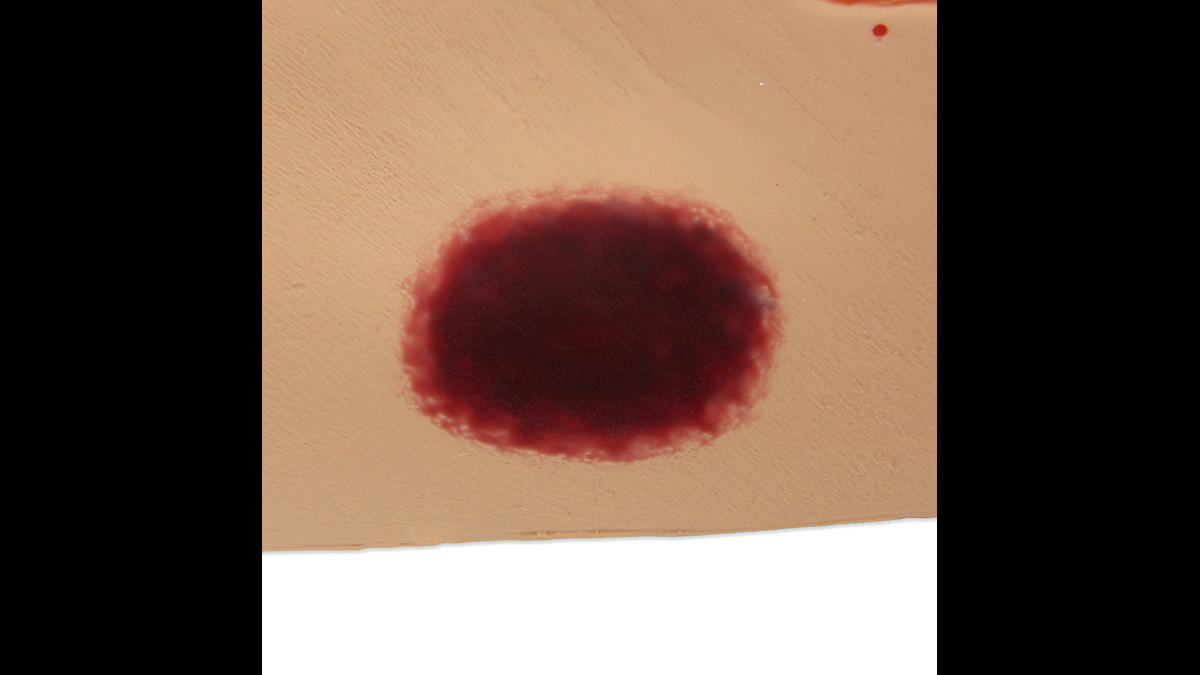
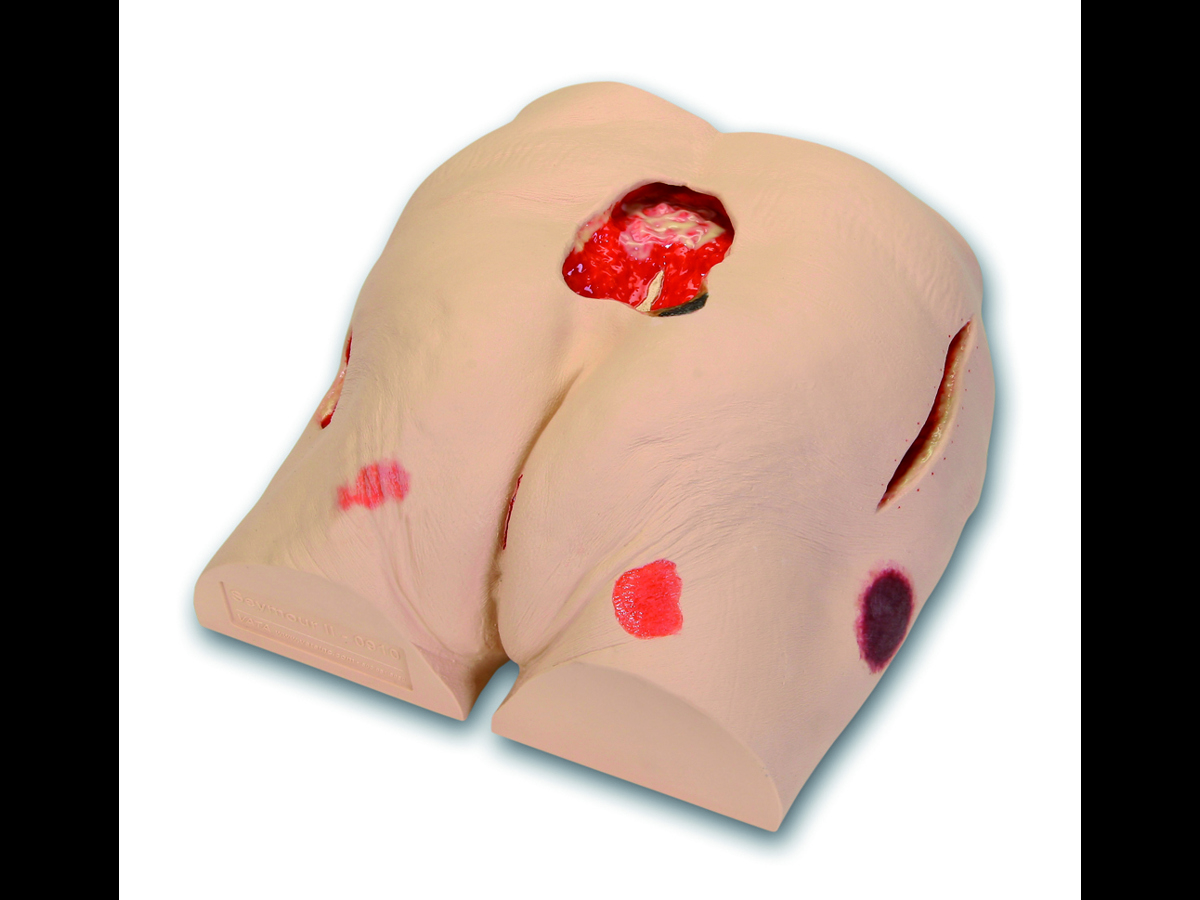
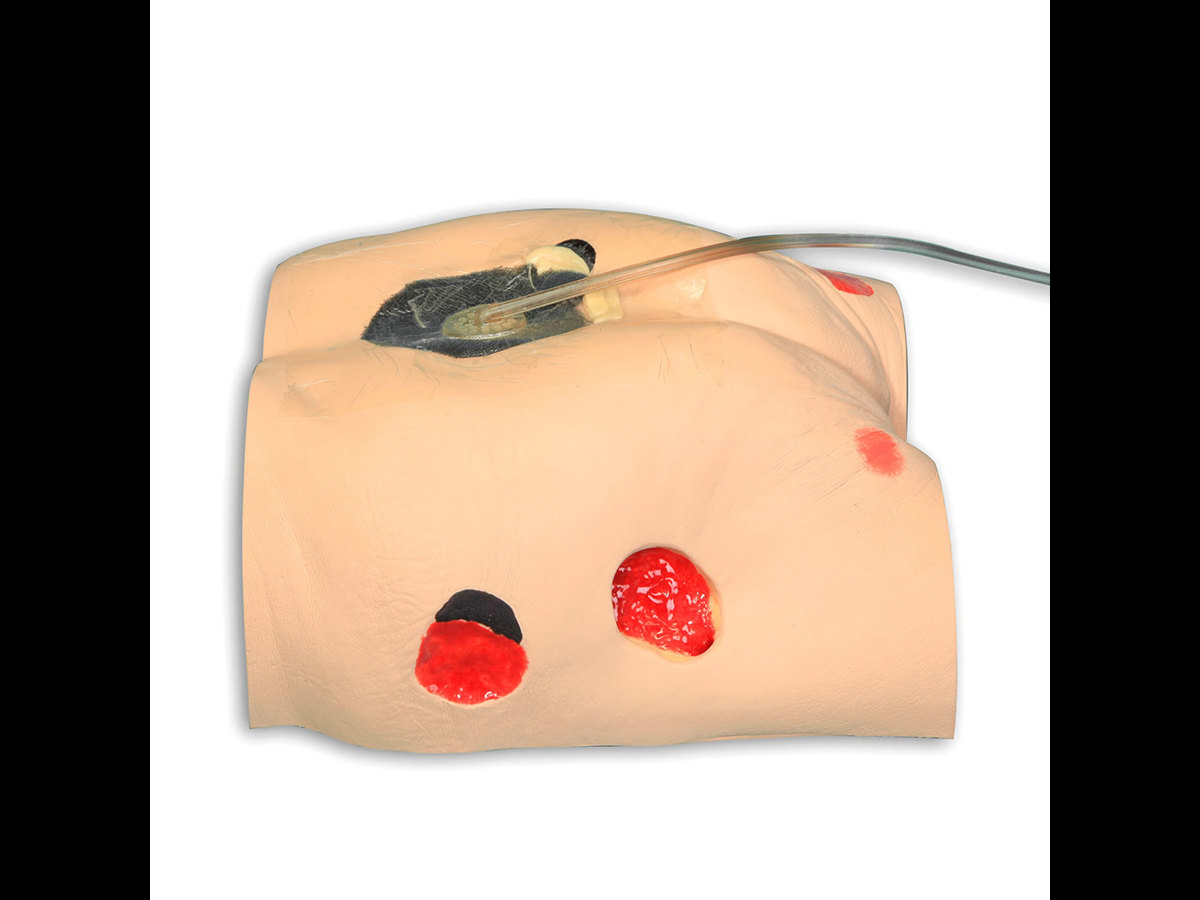

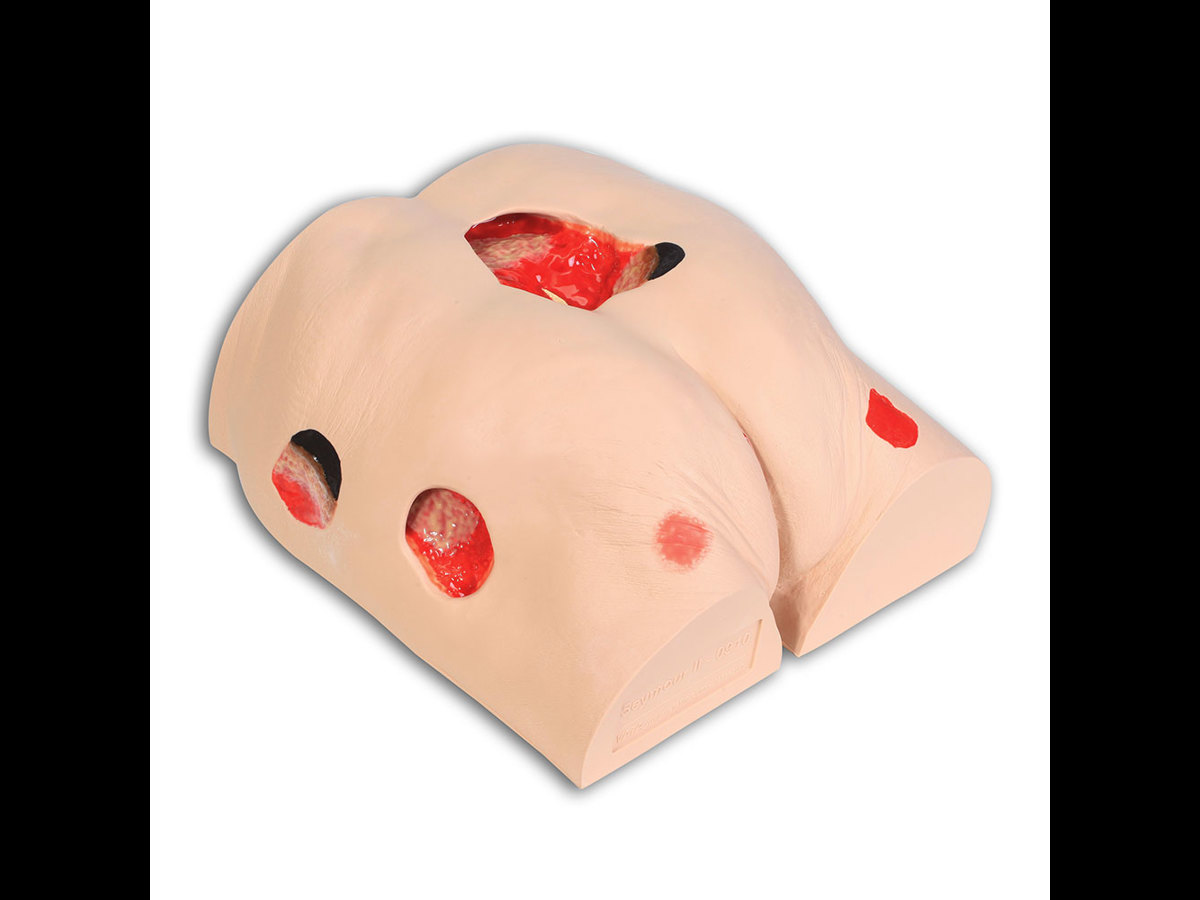
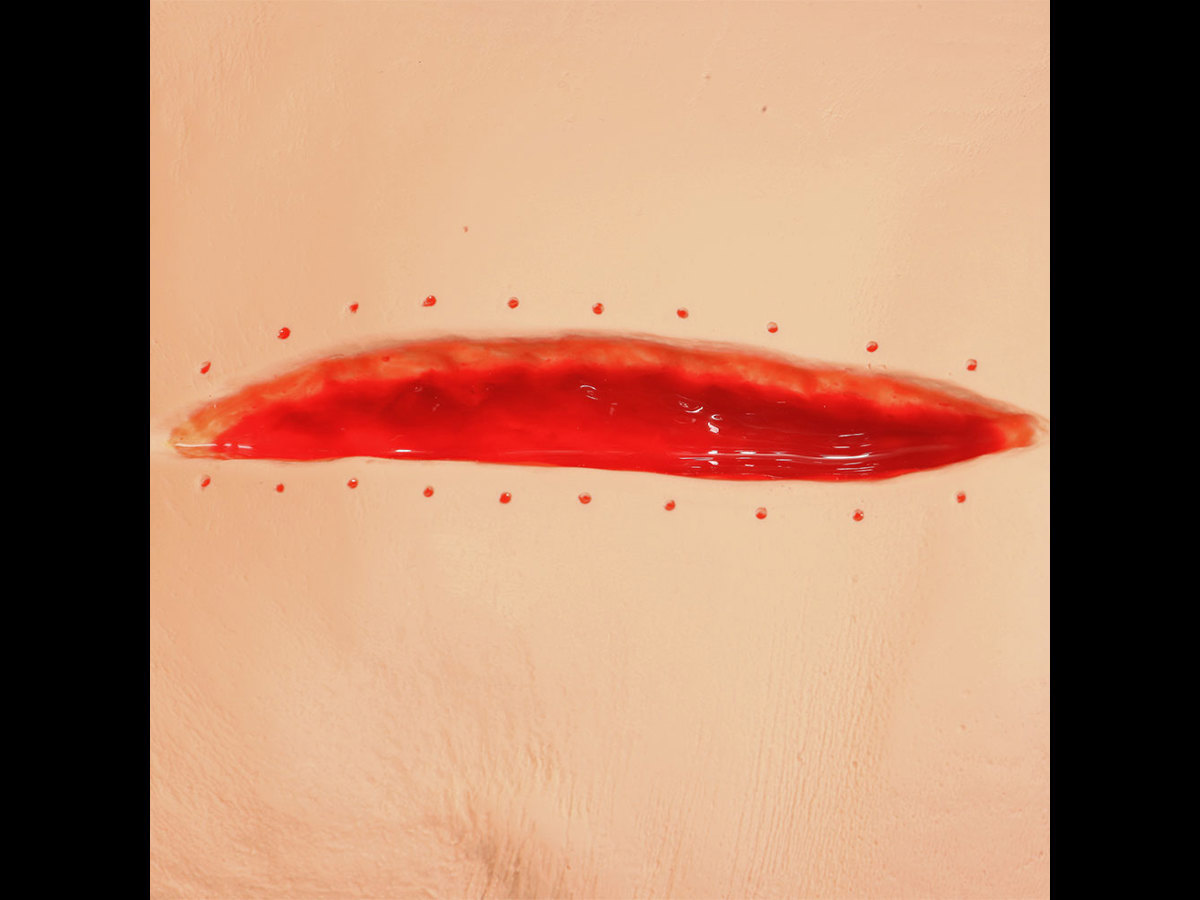
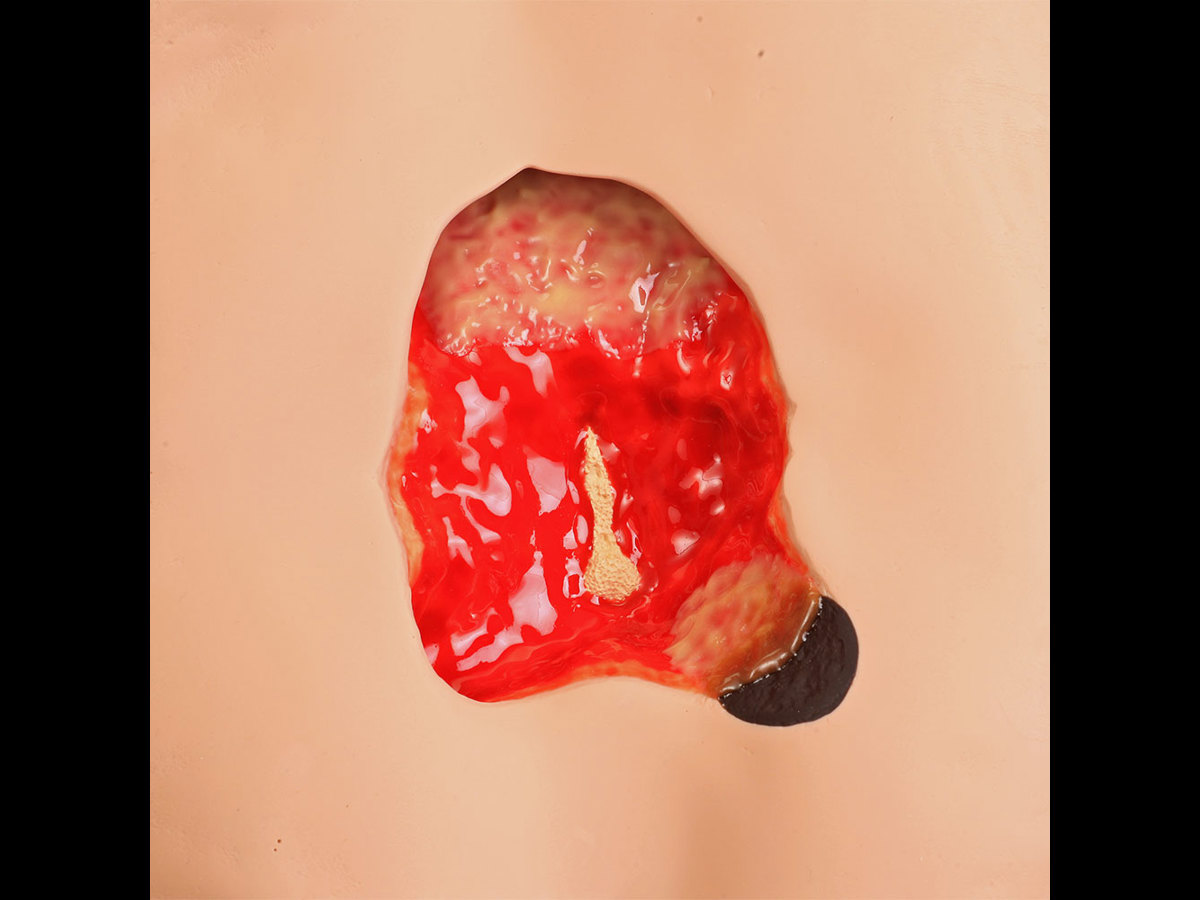
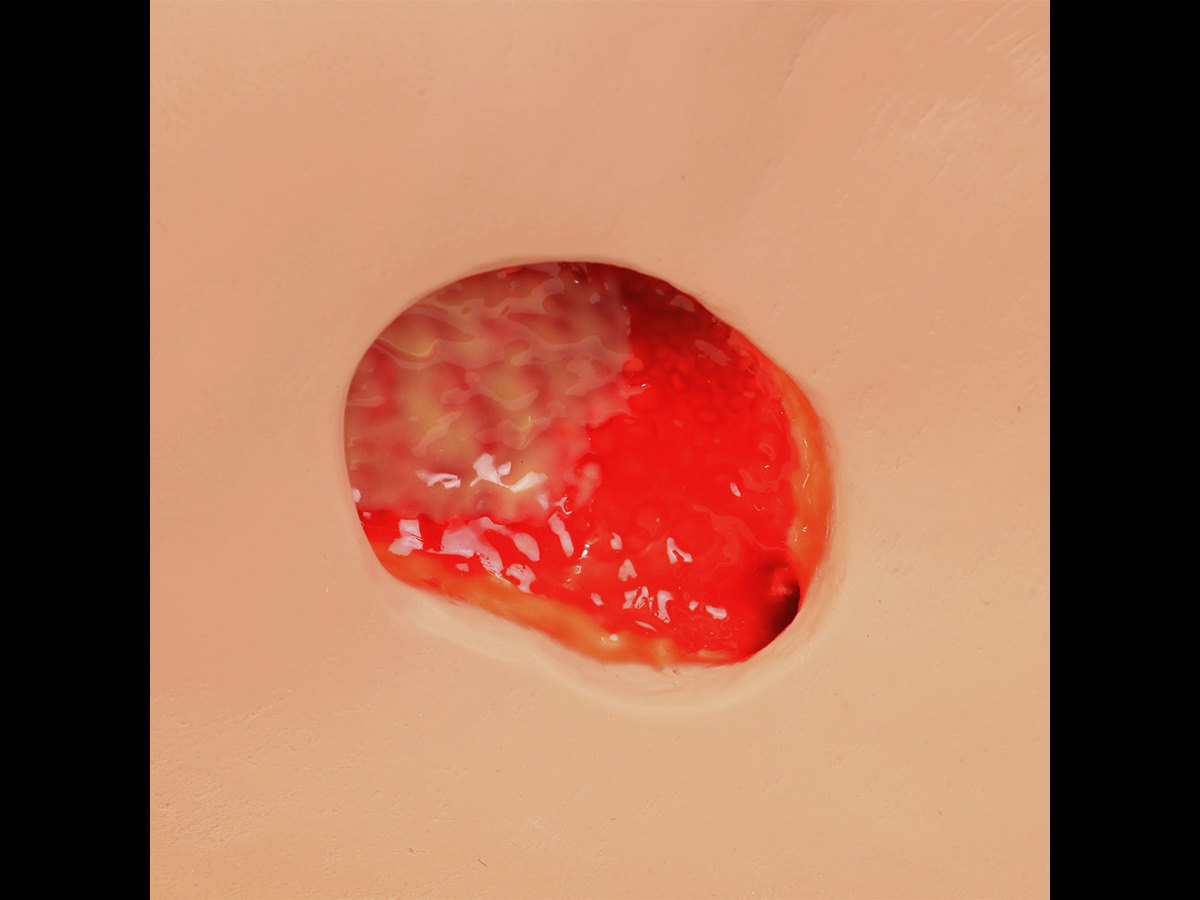
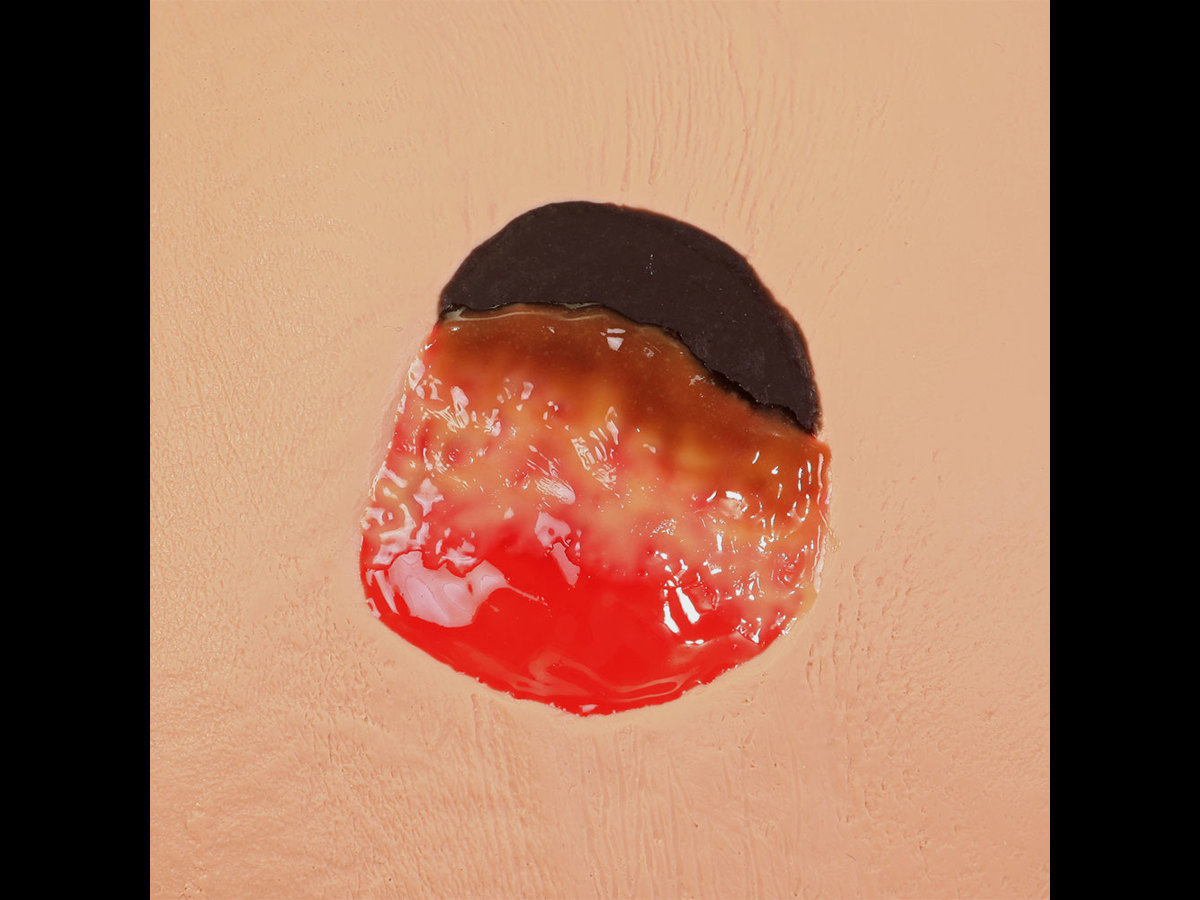
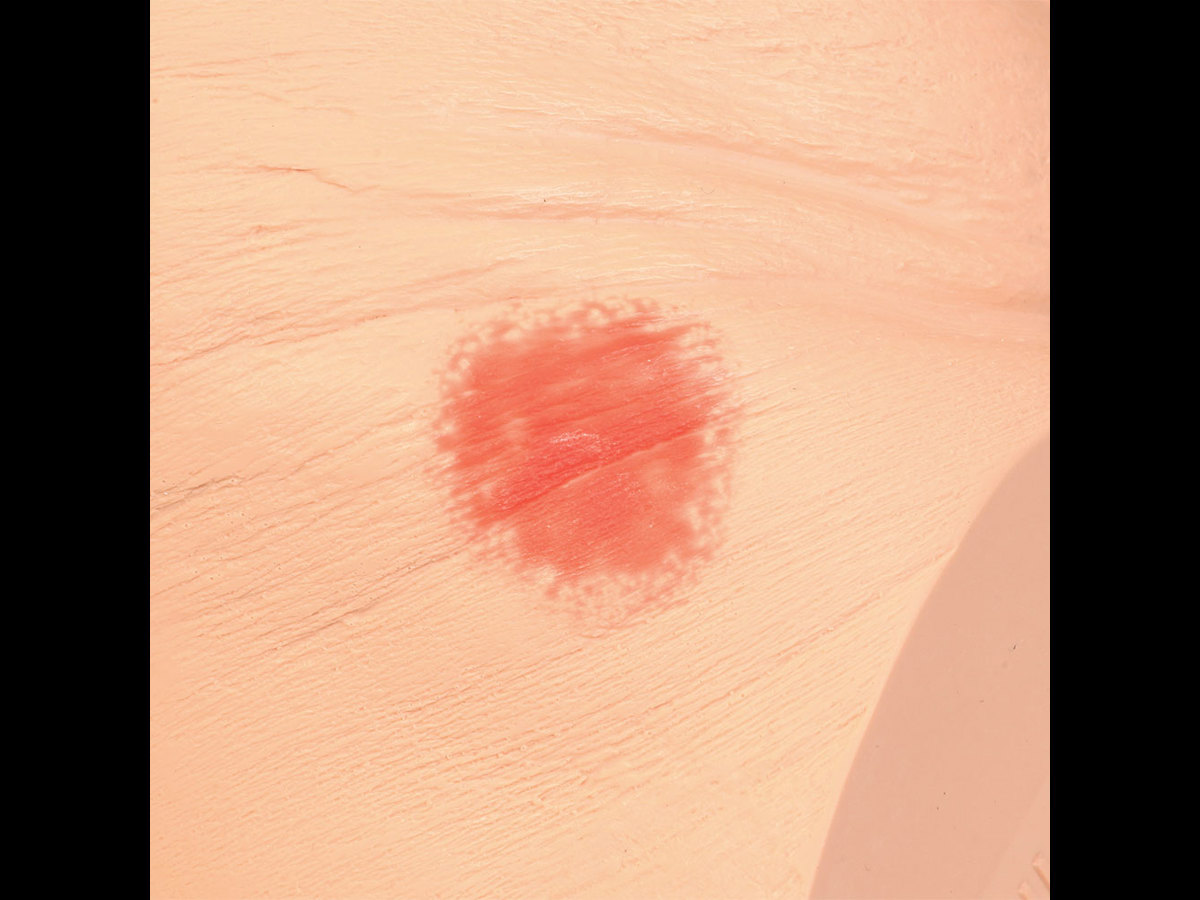
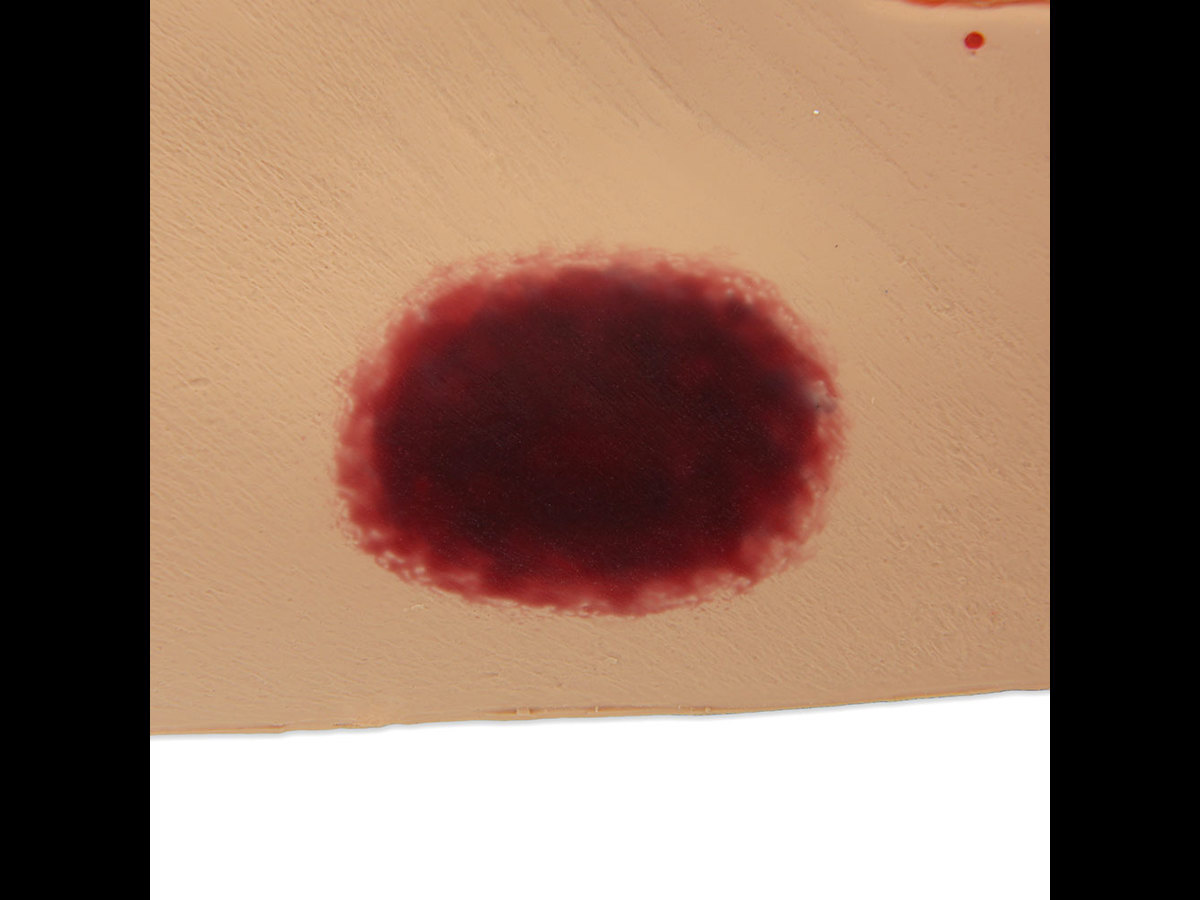
Realism
- Flexibelt, naturtroget material tllåter användning av förband
- Anordningar för sårbehandling med undertryck kan användas (utan limrester)
Cleaning
- Kan tvättas med tvål och vatten
Anatomy
Visar följande tillstånd:
- Kategori 1 - Trycksår
- Kategori 2 - Intakt blåsa
- Kategori 3 - Trycksår med underminering, fistel, subkutant fett och fibrinbeläggning
- Kategori 4 - Djupt sår med synligt ben, underminering, fistel, subkutant fett, nekroser och fibrinbeläggning
- Misstänkt djup vävnadsskada, okategoriserat trycksår och ett 14 cm öppet sår
Skills Gained
- Färdighetsbedömning
- Förbands-tekniker
- Sårbehandling med undertryck
- Bedömning av sårets längd, djup, underminering och fistel-bildning
Product Contains
Works with the following products:
References
AAMC Recommendations for Clinical Skills Curricula for Undergraduate Medical Education (2005, p. 30): General wound care technique; Wound debridement, simple
NMC Standards of Proficiency: (p. 28). undertake wound care including dressings, suture removal, and vacuum closures using aseptic techniques and apply pressure bandaging *AH *CH
AAFP Recommended Curriculum Guidelines for Family Medicine Residents, Care of Older Adults Reprint No. 264, p.5 15.Care of conditions that are common in older adults... k. Dermatologic: xerosis, cutaneous neoplasms, environmental and traumatic lesions including skin tears and pressure ulcers, wounds, skin manifestations of systemic illness
Undergraduate Nursing - Australian Wound Mangement Association "Standard 4: Clinical Decision Making: Practice. Wound Management is practised according to the best available evidence for optimising outcomes for the individual, their wound and their healing environment."
Paramedics Australasia: Paramedicine roles: General Care Paramedic: Specialist management of wounds (cleaning, closure and dressing)
Practical Skills and Procedures, General Medical Council, April 2019, p.6 Therapeutic Procedures 21. Carry out wound care and basic wound closure and dressing. Provide basic care of surgical or traumatic wounds and apply dressings appropriately.
NMC Future nurse: Standards of proficiency for registered nurses, 17 May 2018, p.34 4.1 observe, assess and optimise skin and hygiene status and determine the need for support and intervention 4.2 use contemporary approaches to the assessment of skin integrity and use appropriate products to prevent or manage skin breakdown 4.4 identify and manage skin irritations and rashes 4.6 use aseptic techniques when undertaking wound care including dressings, pressure bandaging, suture removal,and vacuum closures 4.7 use aseptic techniques when managing wound and drainage processes
Competence and Curriculum Framework for the Physician Assistant 2012, p 23 2.6.3 The Physician Assistant should be familiar with the following patient presentations and should be able to manage and diagnose: Skin changes: colour, ulceration, pruritis, rashes
Specialty Training Curriculum for Core Medical Training, 2013 p.105: Recognise life threatening skin rashes presenting with ulcers, commence treatment and involve senior; Recognise the importance of prevention of pressure ulcers and diabetic ulcers

